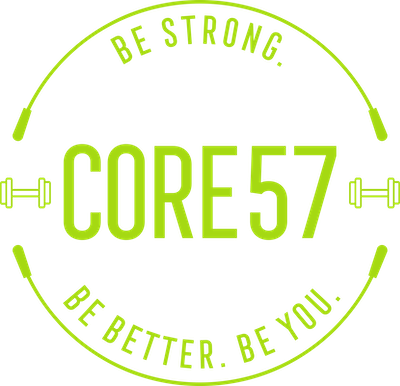Best Footwear for Strength Training
We get this question all the time; “What are the best shoes to wear for my CORE57 classes?”
Well, we’ve got answers! Training the right way means having all the necessary tools to help you achieve your goals- and that means having the right equipment and shoes too.
There are tons of training-specific shoes on the market today so we’re breaking down some of our top picks and sharing the importance of wearing the proper footwear.
The Benefits of Training-Specific Shoes
Footwear plays an important role during training; it helps protect your feet, ankles, and lower legs from injury and provides stability when lifting heavier weights.
The right shoe can also improve your posture and mobility, allowing you to squat lower, while still maintaining leverage. Additionally, they help you complete your workouts with more control and precision by providing your feet with a solid foundation to rely on as you push towards your weight-lifting goals here at CORE57.
Ditch Your Running Shoes
Believe it or not, top of the line running shoes are really NOT good for lifting weights, and yet that is what most people wear to the gym.
But what makes running shoes less than ideal?
First, an average running shoe has a heel to toe drop of 10-12 millimeters. That means that your heel is sitting up quite a bit higher than your forefoot, which pushes your body weight forward. The drawbacks of that are that your balance is thrown off, there is more pressure being put on your knee joints, and the muscles of your posterior chain cannot fire optimally in this position.
Running shoes feel great because of all the cushion they provide, however, this also creates imbalance because you are essentially standing on a marshmallow!
In order to form proper technique and the optimal firing of your muscles up and down the kinetic chain, you want to be FLAT to the floor. There should be equal pressure throughout your foot, including your toes. Training barefoot became popular because people recognized the benefits of “feeling the floor” and using the muscles of your foot to grip and balance.
Shoes We Recommend
So, what are some good shoes for strength training? We’re glad you asked because there are TONS of options. Here are a few to consider the next time you’re in the market to upgrade your gym footwear:
Nike Metcon
No Bull Trainers
Vivo Barefoot shoes
New Balance Minimum
Converse
Vans
There is no need to spend $160-$200 on shoes for strength training. These are all options that provide a flat surface, not too much cushion, and also have the lateral support you need!
What Makes Training Shoes the Right "Fit" for You?
When wearing weightlifting shoes, the difference in arch support, ankle support, width, and overall shape all have an impact on how you exercise. The way your shoes fit you can determine the amount of weight you are able to lift, along with your risk of injury. Here are some things to keep in mind when searching for the right footwear:
Arch Support
An elevated heel supports your posture and allows you to comfortably remain in the correct position when lifting. Naturally having flatter arches means you are more likely to roll your ankle or experience foot and spine pain. Extra support in the heel of your shoe gives you a greater cushion to sit into as you squat, preventing damage and stress on your body.
Not sure how high your shoes' heels should be? The height of the elevation should depend on your personal body type. For example, taller athletes should steer towards a shorter heel to avoid wobbliness, while those with longer femurs should choose a shoe with higher elevation to provide more space to bend.
Ankle Support
Weightlifting can be hard on your ankles- overusing your muscles can lead to sprains or stress fractures. To avoid wearing down your ankles, look for a shoe that is made with sturdy material, has added straps to secure your feet, and has a supportive base.
Width
Finding the right fit is extremely important. While you want to have enough space for your toes to feel comfortable, weight-training shoes should fit snugly. If your shoes are too wide, your feet can slide around and your heel can lift upwards- leading to injury. A shoe on the narrow side will lock your foot in place and create a sturdy foundation for lifting.
When it comes to weight lifting, wearing the right footwear is key. Properly fitted shoes have a great impact on how much you can lift and your overall safety. Whether you choose cross trainers like Nike Metcon or Vans slip-ons – make sure they fit securely so that your feet are supported while exercising. Investing in proper fitting weight training footwear will help prevent injury and ensure that you get the most out of every workout session.

